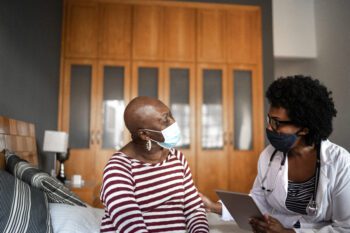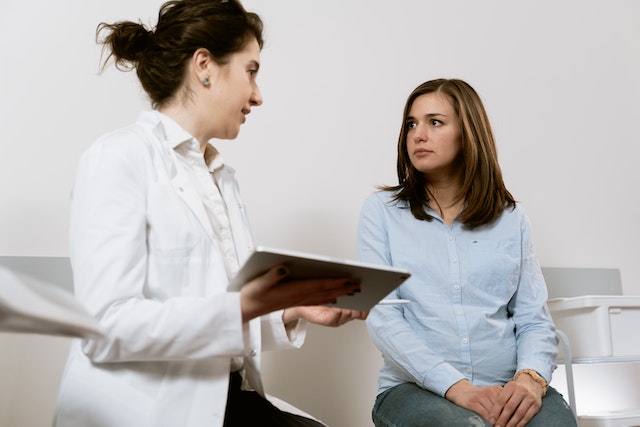Women’s health has long been an underserved area when it comes to clinical innovation, R&D, and funding—the Women’s Health Innovation Opportunity Map (WHOM) is looking to change that.
Created as a partnership between The Bill & Melinda Gates Foundation and the National Institutes of Health (NIH), WHOM brought together a global forum of over 250 experts and stakeholders—representing over 50 countries and diverse perspectives across various geographic regions and sectors that work in women’s health. The forum came together with the goal of taking a complex problem and bringing some clarity into how to tackle it.
“It was, and will continue to be, an honor working with esteemed thought leaders from around the world together to advance the goals and initiatives discussed in the WHOM,” said Dr. Cartier Esham, the Biotechnology Innovation Organization’s (BIO) Chief Scientific Officer and EVP of Emerging Companies, who sat on WHOM’s steering group.
“Improving women’s health is an imperative we should all feel motivated to achieve.”
Today, with the publishing of WHOM, the group has taken the first step in a long campaign to turn the tide on women’s health.
Dangerous statistics in women’s health
Historically, healthcare and public health have been studied and implemented largely through the lens of the (white) male experience—at the cost of women and people of color.
 For example, as Dr. Lili Barouch, M.D., Director of the Johns Hopkins Columbia Heart Failure Clinic, explains, “Women are much more likely to have atypical heart attack symptoms,” continuing, “So while the classical symptoms, such as chest pains, apply to both men and women, women are much more likely to get less common symptoms such as indigestion, shortness of breath, and back pain, sometimes even in the absence of obvious chest discomfort.”
For example, as Dr. Lili Barouch, M.D., Director of the Johns Hopkins Columbia Heart Failure Clinic, explains, “Women are much more likely to have atypical heart attack symptoms,” continuing, “So while the classical symptoms, such as chest pains, apply to both men and women, women are much more likely to get less common symptoms such as indigestion, shortness of breath, and back pain, sometimes even in the absence of obvious chest discomfort.”
This has led to women being seven times more likely than men to be misdiagnosed and discharged in the middle of having a heart attack, according to a 2000 study by the New England Journal of Medicine.
Similarly, recent reports have found that “women who were operated on by a male surgeon had a 32% higher risk of death than those whose surgery had been performed by a woman. For example, while 1.4% of women who had a cardiothoracic operation with a male surgeon died, fewer—1%—did so when a female surgeon was involved.”
And the metrics are consistent in the public health sector as well. Other studies have found that “women are 73 percent more likely than men to be seriously injured in a frontal car crash, almost twice as likely to become trapped in the wreckage of a car crash, and 17 percent more likely to die in a car crash.” This is as a result of crash test dummies being designed after adult male bodies.
Over and over, women’s health is not only underserved, it is overlooked. Women in pain are considerably more likely than men to receive prescriptions for sedatives over pain medication, despite reporting higher instances of chronic pain (and acute at times). Women are also made to wait an average of 65 minutes before receiving an analgesic for acute abdominal pain compared to men who wait only 49 minutes.
The numbers show that the new opportunity map is not only timely but also desperately needed.
A road map for long-term change
The barriers to improving women’s health are undoubtedly intimidating for many, so the initiative’s scope and methodology is highly intentional as it navigates the intersectional needs of people assigned female at birth. As a result, the impact of the map has the potential to be both broad and nuanced.
For example, the report includes a number of metrics when evaluating the unmet needs in women’s health, including:
- Female-specific health conditions
- Conditions that affect women disproportionately
- Conditions that affect women differently
- Conditions that are under-studied or under-resourced for women
More specifically, the map includes in its definition of women: female assigned at birth, transgender, and non-binary people. This, in turn, opens up historically untapped areas of research, such as how diseases or conditions might affect the transgendered community differently across the spectrum of transition, as well as how women of different chromosomal variations of their sex might experience different diseases and react to different forms of treatment.
In keeping with the initiative’s intersectional priority, the affected populations also take into account health shifts across a woman’s lifespan, as well as their global placement, race, ethnicity, age, generation, socio-economic status, caste, and more.

Immediately, these metrics open the door for further research on the effects of socioeconomic placement and stress in women’s health, but as Bio.News has reported in the past, the need for distinct policy changes, as well as cultural shifts within the clinic, is incredibly important to consider as well. A global document that prioritizes these metrics could very possibly bring them more to the fore.
Additionally, the map highlights an area that women, and communities of color, working in healthcare have been saying for some time now: investing in women-oriented research and care is just good business.
“There’s this constant dismissal of conditions that are predominantly in women, or that manifest differently in women,” Julia Owens, Ph.D., President & CEO of Ananke Therapeutics told Bio.News in September 2023. “I have heard investors say, ‘Endometriosis is not an attractive commercial opportunity.’ Not only is that incredibly inaccurate, it is also tilted through the lens of not having a clue about a woman’s experience.”
Not surprisingly, the opportunity map highlights their expected returns from investment as accelerated innovation for women’s health and, ultimately, reduction in morbidity and mortality with increased well-being.
Building momentum
This article does not even begin to scratch the surface of the work done to create and disseminate this 120-page map, but it is clear the forward consensus that the document builds speaks as the optimism that there might be a better oriented united front when it comes to addressing women’s health disparity.
“It is my hope that the Women’s Health Innovation Opportunity Map will light the way for new research and funding opportunities, support consolidated advocacy efforts, and serve as a tool that will drive global action and investments in women’s health,” writes Ru-fong Joanne Cheng, M.D., FACOG, Director, Women’s Health Innovations, Bill & Melinda Gates Foundation.
“We are building momentum to prioritize women’s health,” adds Jamie White, MS, ORWH, NIH; and Dr. Maike Scharp, MScPH, Bill & Melinda Gates Foundation, “and we hope you will join us.”




